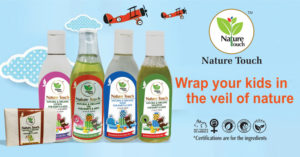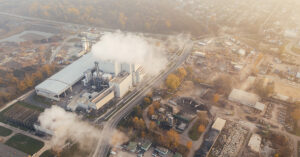At first, I wasn’t very sure what could be the role of the beauty industry in climate changes! As my finding progresses, I started wondering knowing the facts. First, let us explore what the size of the beauty industry we are talking about?
Looking good is a serious business in the world. The global cosmetics market size was valued at $380.2 billion in 2019, and is projected to reach $463.5 billion by 2027, registering a CAGR of 5.3% from 2021 to 2027. And as of 2017, the market size of the cosmetic industry across India had a value approximately $11 billion. The market size of the cosmetic industry recorded a year on year growth and was forecast to reach a value of $20 billion in 2025.
I’m sure by now you might have some idea about the size of the beauty industry I’m talking about. As consumers, we are often attracted to beautiful packaging with luxurious looking boxes and ribbons, etc. But do you know that the pretty boxes of perfumes and oils contribute to the loss of 18 million acres of forest each year? If this continues, there will be 12 billion tones of plastic in landfills in the next 30 years.
Unethical supply chain is another issue that leads to human rights violation, child labors and environmental degradation. Looking good a lucrative business and ugly side of beauty industry is often hide behind the glamorous advertisement of many well know cosmetic brands. Many popular skin care and makeup products uses palm oil, shea and cocoa butters and mica. And most of these raw materials are sourced from the unorganized forced labor.
Palm oil plantations contribute to the deforestation of Amazonian and Sumatran rainforests that indigenous people and many endangered animals reside in. Palm oil derivatives are very commonly used in lipsticks, soaps, and shampoos, and the palm oil business has led to the severe endangerment of 193 animal species.
The Mica, a mineral used to give sparkling effect in the beauty products. Jharkhand and Bihar, two regions in India, are where the majority of the mining for mica happens. In fact, around 60% of the world’s mica comes from those two regions. It is estimated by the centre for Research on Multinational Corporations (SOMO) that there are 20,000 children working in the mica mines. 5 to 10 children die each month in the mica mines.
Most children who work in mica mines earn fifty rupees a day. Before the mica ends up in the consumers products, it passes through many middlemen’s hands and crosses many borders to make it impossible to trace its origin and the harsh reality of mica remains buried in the mica mines itself.
At this point you must be wounding how beauty industry causing environmental damages. If you closely take a look around, you will find it is the packaging of beauty industry that’s the main and major culprit. As the consumption of personal care and beauty products have increased over the years, the beauty industry is becoming of the biggest culprits of plastic pollution worldwide.
Be it your shampoo or a bubble-wrapped body soap, eye shadow palette, the beauty industry is one of the biggest culprits of using plastics like cellophane, polystyrene and the worst, plastic bottles and tubes. All this contributes to more and more plastic waste every year. As per the statistics, one garbage truck of such waste is dumped into the ocean every minute. If not stopped, by 2050, there will be more plastic than fish (by weight).






